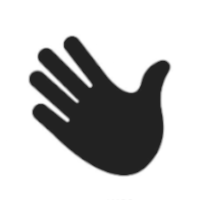Inquiring into Your Vibrant Schools Results
A Focus on Strengths
In developing the Vibrant School Scale, we intend to spark invigorating conversations that invite educators and those they serve into inspiring conversations about how to bring about greater vibrance in their community of student and adult learners. Appreciative Inquiry provides a structured, strengths-based process for hosting these conversations (Watkins, Mohr, & Kelly, 2011). The orientation of appreciative inquiry is to explore and amplify strengths - that is, find examples of what you want, then design and execute strategies that replicate and expand on those strengths. This approach generates positive energy and new possibilities.
Now that you have your school's results, let's get started!
Inquiring into Stories of Vibrant Learning Environments
-
Paired Interviews
The appreciative inquiry process starts by inviting members of the school community to pair up with someone else that they do not know well or work with on a regular basis. These partners will take turns interviewing each other using the following protocol to discover instances of vibrance already at play in the school.
- Tell me a story about your best experience working or learning in an environment that really inspired new thinking, where you were pushed to be innovative and come up with novel solutions to a complex problem. Who was involved? What challenges did you face? What were the conditions that supported creativity and innovation?
- Tell me about a time when a community you were involved with worked collectively to address an issue of importance in which the voices of all participants were sought and valued. What contributed to that collective engagement? What difference did the inclusion of a variety of perspectives make?
- Tell me a story about learning something new in a way that was fun and engaging. What contributed to these high spirits and playfulness? To what extent did laughter or movement play a role?
- Imagine that you could transform our school to become more vibrant, what would that look like? What changes might heighten the vitality and positive energy? If you had three wishes for bringing your vision into being, what would they be?
-
Small Groups Capturing Themes
When each pair has had sufficient time to tell and explore their stories and their wishes, they are invited to join with two other pairs to form a small group. Each person then briefly recounts his or her partner's stories and wishes with the group. As the sharing unfolds, participants identify three to five themes that energized and enlivened them.
-
Large Group Sharing of Themes
These are shared with the large group. These can be captured electrically, on a white board, or on sentence strips. Participants may be given colorful dot stickers to affix to the three themes that most resonate with them and that they would have the most energy for working towards.
-
Imagining What Could Be?
The next phase involves developing vivid images of what the school would look and feel like if it honored fully the vibrant themes that emerged as holding a great deal of energy and interest. Participants join new design teams focused on the themes that people are most energized to work toward. They then develop creative presentations of what the school might then look like, feel like, and sound like were it to become vibrant in the imagined ways. They convey those images through drawings, collages, music, or skits. After the groups have developed their images of the future, they capture them in a set of conjectures or claims for the school, called Possibility Statements, framed as though those new images were already present and expressed fully in the school.
-
Innovate
With these beautiful, vivid images fresh in their imaginations, the design teams convene to brainstorm and plan action steps for moving the school closer to tis imagined future. Design team members schedule activities, identify locations, and plan the logistics of getting things done. Strategies over which the team members have control are listed as Commitments. Strategies that require the involvement, permission, or resources from another party are listed as Requests (which should be accompanied with a strategy for who and how the request will be made). The process isn't complete until all these logistics are captured in writing.
Once your school community has tried the suggested innovations, the process begins all over again. It's an iterative, ever-evolving process of action learning leading to ever more vibrant school communities.
Learn More
- Clement, D., Tschannen-Moran, M. & Erdogan, U. (2018). Vibrant schools: Measuring our highest aspirations for our students, In S. Cherkowski & K. Walker, Perspectives on Flourishing in Schools, (pp. 383-394), Lexington Books.
- Tschannen-Moran, M. & Clement, D. (2018). Fostering more vibrant schools. Educational Leadership, 75 (3), 28-33.
- Tschannen-Moran, M. & Tschannen-Moran, B. (2011). Taking a strengths-based focus improves school climate. Journal of School Leadership, 21, 422-448.
- Whitney, D. & Trosten-Bloom, A. (2010). The Power of Appreciative Inquiry: A Practical Guide to Positive Change (2nd Ed.), Berrett-Koehler Publishers.




